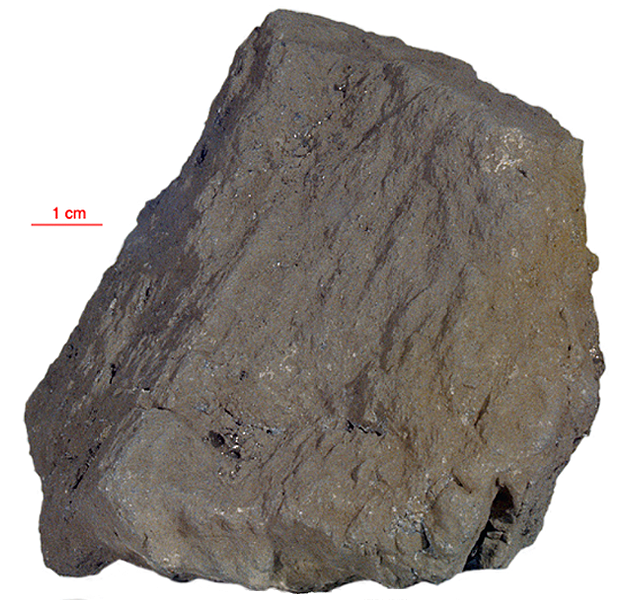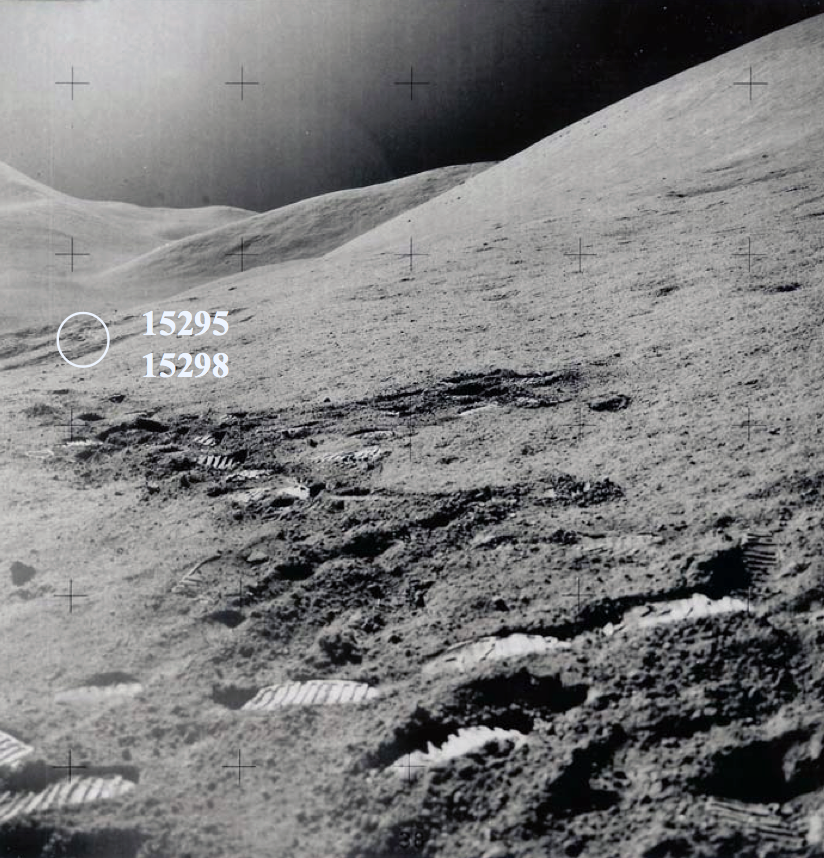
Fact sheet
15295 is a glass matrix breccia made of local soil components. Five types of glass are recognised (orange/black, yellow, green, colourless and brown). The glass beads are thought to have been formed in fire fountains. The most noticeable feature of our thin section is the large anorthosite clast whose texture has been described as “cataclastic” with mostly plagioclase (An95.5), and sparse, tiny, pyroxenes. Rotation 2 shows part of this clast and in rotation 1 another fragment of plagioclase displays a step faulted fracture pattern. Rotation 1 also shows a crystallite-rich yellow glass fragment.
The sample weighed 947 grams before analysis and has not been dated.
Further details of this and other Apollo samples are here: http://curator.jsc.nasa.gov/lunar/
The Apollo 15 landing site was in the Apennine Highlands, and close to Hadley Rille — a long, narrow winding valley. Approximately 76 kg of lunar material, including soil, rock, core-tube and deep-core samples, were returned to Earth.
This mission was the first flight of the Lunar Roving Vehicle which allowed the astronauts to venture further from the Lunar Module than in previous missions. During three periods of extravehicular activity, or EVA, on July 31st, and August 1st and 2nd, Scott and Irwin completed a record 18 hours, 37 minutes of exploration, travelling 17.5 miles, in the first car that humans had ever driven on the Moon.
Apollo 15 was launched on 26 July 1971.







